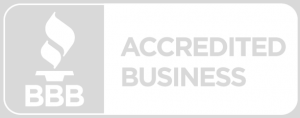
Glass-Trac Start-Up Process
Glass-Trac Gauges, formally Daniel Level Gauge & Valve, are available in three main types: Reflex, Transparent, & Tubular. These direct reading instruments are available in many different materials to meet your specific process conditions.
Glass-Trac Reflex Gauges use prism glass to provide an excellent indication of the liquid level. All liquids appear black in contrast to the mirror-like surface above. This clean line of separation can be sighted from many yards away.
Glass-Trac Transparent Gauges use clear, see-through glass on both sides so that both the color and the interface of liquids can be viewed. Electric lighted gauge illuminators are available for use on transparent gauges and provide easy viewing of liquid levels in dimly lighted areas.
This post walks through how to prepare and start-up the Questtec Solutions’s Glass-Trac Sight Glass.
Glass-Trac Sight Glass Preparation
Step 1
Start by observing and removing the yellow caution tape. Under the caution tape is a perforated cushion. Remove the perforated cushion.
Step 2
Next we’ll move on to retorquing the fasteners. Identify the pressure series of the sight glass by locating the model number on the nameplate.
L = Low Pressure, torque value 20 ft/lbs
M = Medium Pressure, torque valve 32 ft/lbs
H = High Pressure, torque value 40 ft/lbs
Step 3
Locate the torque tag wired to the sight glass.
Step 4
Using a calibrated torque wrench, follow the sequence on the torque tag.
Step 5
Starting in the middle of the section working outward, retorque the nuts to the appropriate value.
Sight Glass Start-Up
Questtec Glass-Trac process gauges are typically provided as an assembly with upper and lower gauge valves.
These gauge valves are equipped with safety ball checks as a standard feature. Gauge valves have three positions:
- Fully closed
- Fully open
- and Start-up.
Similar to a common gate valve, gauge valve position may be determined visually by the rising stem design. Additionally a reference mark on the handwheel can aid in determining the position during start up.
Step 1
Confirm both the upper and lower gauge valves are in the fully closed position.
Step 2
Using a paint marker with a contrasting color, mark a line at the 12 o’clock position on the upper and lower valve handwheel.
Step 3
Starting with the upper valve, slowly open the valve counter clockwise, stopping at the 8 o’clock position.
Step 4
Slowly open the lower gauge valve counter clockwise, stopping at the 8 o’clock position.
Step 5
Allow the liquid level to rise inside the gauge chamber.
Step 6
Once the liquid level has stopped rising and stabilized with the vessel liquid level, the gauge valves can be adjusted to the fully open position.
Step 7
Rotate the handwheel counterclockwise until the handwheel stops.
Step 8
The sight glass is now in service.
Following these steps will avoid false level indications due to unintended ball check seating. If the gauge valves are immediately fully opened, the liquid flow through the valve will cause the ball check to seat. The partially open, 8 o-clock start-up position of the gauge valve stops the ball from contacting the ball seat.
If you have any questions, contact your Channel Partner to order your engineered solutions, designed with care by Questtec Solutions.
About Questtec Solutions
Questtec Solutions is an international company with representatives based around the world. Our Partners can assist with commissioning start up and calibration, 24-hour service, and repair support.
Questtec Solutions employs over 125 years of collective experience with all aspects of liquid level gauge and valve product lines. With a new state-of-the-art manufacturing facility and custom weld shop based in Houston, Texas, Questtec Solutions is able to provide innovative engineered solutions to meet our customer’s specific needs.

